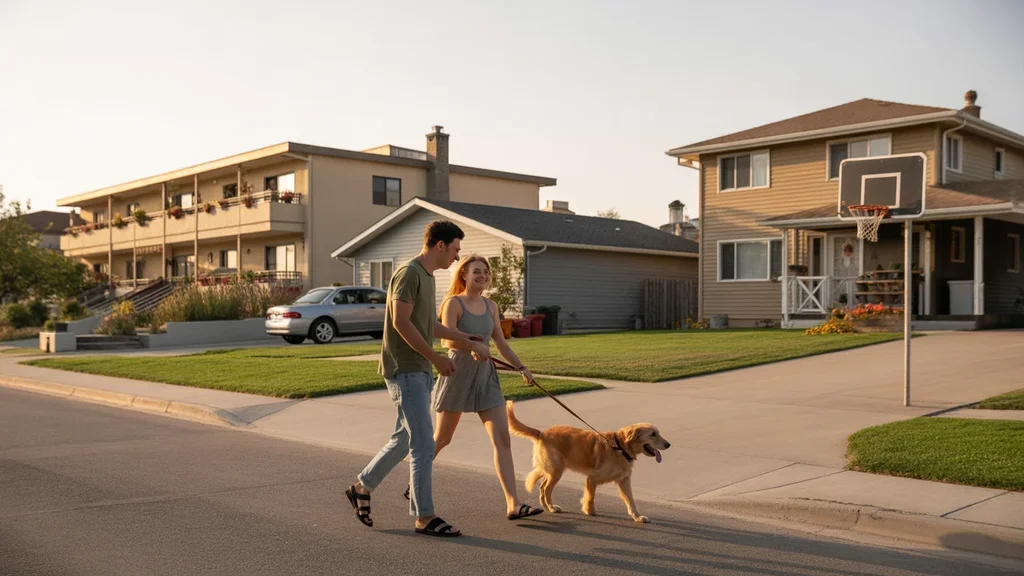Renting vs. Owning in Taylorsville: What You’ll Pay

When comparing the cost of living in an apartment vs house in Taylorsville, the first factor to consider is monthly housing costs. According to recent data, the average rent for a 2-bedroom apartment in Taylorsville is around $1,450 per month. The average rent for a 3-bedroom house in Taylorsville is $2,100 per month. Of course, these are just averages – actual rents can vary based on location, amenities, and unit condition.
For those looking to buy a home, the median sale price in Taylorsville is currently $450,000. Assuming a 30-year fixed mortgage at 6.5% interest with 10% down, the monthly mortgage payment would be around $2,550 (not including property taxes and insurance). This is about 22% higher than the average rent for a 3-bedroom house.
It’s important to factor in the full range of expenses when comparing housing costs. Renters should budget for application fees, security deposits, and renter’s insurance. Homeowners need to plan for closing costs, property taxes, HOA fees, and higher insurance premiums. Both renters and owners should also consider utilities, maintenance costs, and lifestyle preferences.
Table: Cost Comparison – Apartment vs House
Here’s a side-by-side breakdown of common monthly costs in Taylorsville*:
| Expense | 2BR Apartment | 3BR House |
|---|---|---|
| Rent/Mortgage | $1,450 | $2,550 |
| Utilities | $150 | $250 |
| Internet | $65 | $65 |
| Insurance | $15 | $80 |
| Maintenance/Repairs | $0 | $150 |
| HOA Fees | $0 | $250 |
| Total | $1,680 | $3,345 |
*Estimates are for mid-range units with typical usage, based on gross monthly income (pre-tax).
Utility and Upkeep Differences
In addition to the base rent or mortgage, there are several other cost factors to consider:
- Utilities: Houses typically have higher utility costs due to larger square footage. In Taylorsville, many homes use swamp coolers which can help reduce cooling bills in the summer compared to central A/C.
- Maintenance: Homeowners are responsible for all repairs and upkeep, such as fixing broken appliances, servicing the HVAC, and maintaining the roof and exterior. Renters are generally not liable for these costs.
- Landscaping: Most houses in Taylorsville have private yards that need regular lawn care, tree trimming, snow removal, etc. Renters may have access to shared green space that is maintained by the property owner.
- Amenities: Newer apartment complexes in Taylorsville often include trash service, fitness centers, pools, and secured parking. These perks are less common with single-family rentals.
Lifestyle Tradeoffs
Finances are just one part of the equation. Renters and buyers should also weigh factors like space, location, privacy, and personal priorities. Apartments tend to offer greater flexibility, mobility, and affordability, while houses provide more room to spread out and put down roots.
Many Taylorsville residents choose apartments for the convenient location, walkable neighborhoods, and included amenities. Families often prefer houses for the private yards, individualized space, and long-term stability. Young professionals, couples, and retirees fall on both sides depending on budget and lifestyle. Pet owners may lean toward houses for the private yards, or apartments with accommodating pet policies.
Which Is Cheaper Long Term in Taylorsville?
While renting is almost always cheaper than owning on a monthly basis, the long-term cost comparison depends on your timeline and housing goals. In Taylorsville, the breakeven horizon (the point at which owning becomes cheaper than renting) is around 6 years.
For example, over a 5-year period, a renter would pay around $100,800 in total for a 2-bedroom apartment (assuming modest 3% annual rent increases). A homeowner would pay $200,700 for a median-priced house, including the down payment, mortgage, taxes, insurance, and 1% annual maintenance (but excluding utilities and appreciation).
However, after 10 years, the renter’s total outlay rises to $217,500, while the homeowner’s net cost is only $187,500 (accounting for modest 2% annual appreciation). This illustrates how owning can be advantageous over longer time horizons, though renters enjoy lower risk and greater liquidity.
FAQs About Housing Costs in Taylorsville
How much more does a house cost per month?
In Taylorsville, the average rent for a 3-bedroom house is about $650 more per month than a 2-bedroom apartment, not including utilities and maintenance.
Do houses come with higher utility bills?
Yes, standalone homes generally have higher utility and upkeep costs than apartments due to the larger space, individualized systems, and exterior maintenance.
Are apartments cheaper even with pet fees?
While many Taylorsville apartments charge pet rent or one-time fees, the overall cost is still usually less than renting or owning a house when accounting for the yard and pet-friendly square footage.
Making the Right Housing Choice in Taylorsville
As this analysis shows, living in an apartment is generally cheaper than a house in Taylorsville, with potential savings of $400 to $1,000 per month. However, the ideal option depends on your budget, space needs, lifestyle, and long-term goals.
Regardless of whether you rent or buy, housing is likely your largest monthly expense. Being realistic about your income and spending is essential for making a smart, sustainable choice. For more info, check out these monthly budget examples for Taylorsville residents.
Ultimately, the best way to minimize your housing costs is to choose a home you can comfortably afford, in a neighborhood you enjoy, with amenities that fit your lifestyle. By understanding the full picture of the cost of living in an apartment vs house in Taylorsville, you can make an informed decision for your needs and budget.
